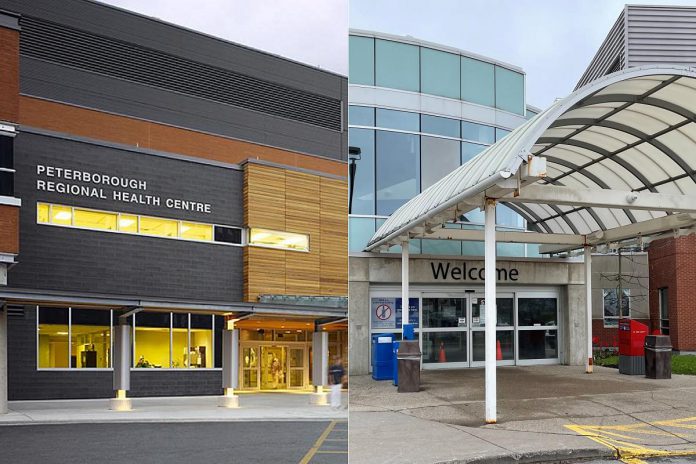
With the arrival of respiratory illness season, hospitals in the Kawarthas region are taking a closer peek at their masking policies, with two reintroducing the requirement of wearing masks in all patient areas.
In late October, Peterborough Regional Health Centre (PRHC) announced masks will again be required in all direct patient care areas and in spaces where patients gather.
The hospital says its goal is to protect patients from developing hospital-acquired COVID-19, respiratory syncytial virus (RSV), influenza, and other respiratory virus infections during respiratory illness season. Masking will be mandatory for patients, visitors, staff, and volunteers, the hospital noted.
“Masks slow the spread of COVID-19 and other respiratory illnesses,” said Dr. Justin Tilak, physician lead for the infection prevention and control group at PRHC, in a statement. “During respiratory season, where COVID-19, RSV, flu and more are circulating more frequently, we want to do everything we can to protect our most vulnerable patients.”
This decision comes as many hospitals across Ontario, including Toronto’s University Health Network, are implementing similar measures, PRHC noted. At the Peterborough hospital, medical masks will continue to be available at the main entrance, in the emergency department, and in patient care areas across the hospital.
Additional personal protective equipment and visiting restrictions may apply based on the patient’s location and status, the hospital stated. Meanwhile, active screening of all patients and visitors entering the hospital will continue.
Ross Memorial Hospital (RMH) in Lindsay is taking a similar approach. In October, the hospital announced masking is required for entry into all patient care units. RMH has also “strongly recommended” masks be worn while in ambulatory waiting rooms, including the emergency department.
Campbellford Memorial Hospital (CMH) in Campbellford currently requires masks to be worn in all clinical areas of the hospital, which includes departments such as diagnostic imaging, lab, clinic space, inpatient units, and the emergency room.
“Masking remains optional outside of clinical areas such as meeting rooms, office spaces, the gift shop, or the cafeteria,” Peter Mitchell, CMH’s executive assistant and communications and community relations manager, told kawarthaNOW. “We do review our masking policy regularly and will make changes if the situation warrants it.”
To the west at Northumberland Hills Hospital (NHH) in Cobourg, the infection prevention and control and occupational health and safety teams continue to monitor prevalence of respiratory illness in and around the community and in the hospital, said Jennifer Gillard, vice-president of patient experience, public affairs, and strategic partnerships.
“Masks continue to be available free of charge for patients, visitors and staff who wish to don one,” Gillard told kawarthaNOW. “But unless requested for specific purposes — patients with symptoms of communicable respiratory illness, for example — there is no blanket requirement to mask at NHH at this time.”
Gillard said the hospital does encourage masking, including in areas of clinical and patient care, based on personal preference.
“Our infection prevention and control and occupational health and safety teams continue to monitor prevalence and will revisit as required,” Gillard reiterated.
At Haliburton Highlands Health Services (HHHS), the Haliburton hospital requires staff, physicians, volunteers, visitors, and patients to wear a procedure mask in specific areas of the hospital.


























